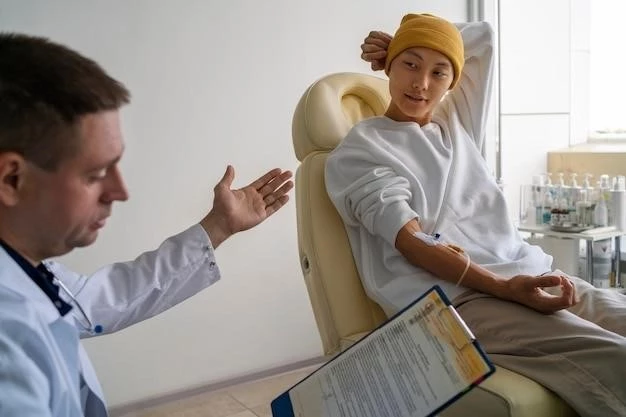Disease ⎼ Dysplasia Epiphysealis Hemimelica
Introduction
Dysplasia Epiphysealis Hemimelica, also known as Trevor Disease, is a rare developmental disorder of the bone growth plate and cartilage․ This condition typically affects children and adolescents, but cases in adults have also been reported․ Hemimelica refers to the fact that the abnormalities occur on one side of the body․
First described in 1950 by Mouchet and Belot, Dysplasia Epiphysealis Hemimelica is characterized by an overgrowth of cartilage within the joints, leading to various skeletal abnormalities․ The exact cause of this disorder is still unknown, and it is considered non-hereditary and non-inherited, occurring sporadically․
Individuals with Dysplasia Epiphysealis Hemimelica may experience gradual joint pain, stiffness, and swelling, which can impact their mobility and quality of life․ Early diagnosis and appropriate management are crucial in addressing the symptoms and preventing complications from this rare bone disorder․
Throughout this article, we will delve into the understanding of Dysplasia Epiphysealis Hemimelica, its symptoms, diagnosis, effects on joints and limbs, available treatment options, surgical procedures, and approaches to pain management for individuals affected by this unusual condition․
Understanding the Disorder
Dysplasia Epiphysealis Hemimelica is a rare non-hereditary skeletal disorder characterized by an abnormal overgrowth of cartilage within the joints․ This condition primarily affects the epiphysis, the end part of a long bone where growth occurs, leading to asymmetric growth of the affected limb․
The exact cause of Dysplasia Epiphysealis Hemimelica is not well understood․ Some theories suggest that it may be related to a disturbance in the differentiation and maturation of growth plate cartilage cells, leading to the abnormal proliferation of cartilage within the affected joints․
Individuals with this disorder may present with unilateral (affecting one side of the body) skeletal abnormalities, such as elongation of bones, joint deformities, and asymmetry in limb length․ The abnormal growth of cartilage within the joint can also result in functional impairment and limited range of motion․
Dysplasia Epiphysealis Hemimelica is commonly diagnosed based on clinical features, imaging studies like X-rays, CT scans, and MRI scans, and histopathological examination of affected tissues․ Early detection and accurate diagnosis are essential for appropriate treatment and management of the disorder․
While Dysplasia Epiphysealis Hemimelica predominantly affects children and adolescents, cases in adulthood have been documented, albeit less frequently․ The rarity of this bone growth disorder underscores the importance of further research to better understand its pathogenesis and develop effective therapeutic strategies․
As researchers continue to investigate the underlying mechanisms of Dysplasia Epiphysealis Hemimelica, gaining a more profound insight into the disorder’s etiology and progression is crucial for improving outcomes and enhancing the quality of life for individuals living with this uncommon skeletal condition․
Symptoms and Diagnosis
The symptoms of Dysplasia Epiphysealis Hemimelica can vary depending on the location and extent of the abnormal cartilage growth within the affected joint․ Common symptoms may include joint pain, stiffness, swelling, and limited range of motion․ In some cases, individuals may experience joint instability and deformities, leading to difficulties with daily activities․
Diagnosing Dysplasia Epiphysealis Hemimelica often involves a comprehensive evaluation of the patient’s medical history, physical examination, and imaging studies․ X-rays are frequently used to visualize the skeletal abnormalities, such as asymmetric overgrowth of bones and cartilage within the affected joint․
Advanced imaging techniques like CT scans and MRI scans may provide more detailed information about the extent of cartilage proliferation, joint deformities, and the impact of the disorder on surrounding tissues․ Histopathological examination of a tissue biopsy from the affected joint may be necessary to confirm the diagnosis․
It is essential for healthcare providers to differentiate Dysplasia Epiphysealis Hemimelica from other bone and joint disorders that may present with similar symptoms, such as osteochondroma or osteoarthritis․ A multidisciplinary approach involving orthopedic specialists, radiologists, and pathologists is often employed to ensure an accurate diagnosis․
Early recognition of the symptoms and prompt diagnosis of Dysplasia Epiphysealis Hemimelica is crucial for initiating appropriate treatment interventions and preventing potential complications associated with the abnormal growth of cartilage within the affected joint․
Impact on Joints and Limbs
Dysplasia Epiphysealis Hemimelica can have a significant impact on the affected joints and limbs, leading to a range of functional and structural abnormalities․ The abnormal overgrowth of cartilage within the joint can result in joint pain, stiffness, and swelling, affecting the individual’s mobility and overall quality of life․

One of the most common effects of Dysplasia Epiphysealis Hemimelica is the asymmetrical growth of bones and cartilage, causing limb length discrepancies and joint deformities․ This asymmetry can lead to difficulties with gait and posture, as well as challenges with performing daily activities that require coordinated movement․
The abnormal proliferation of cartilage within the joint can also result in joint instability and an increased risk of fractures, particularly in weight-bearing joints like the knees and ankles․ In severe cases, the continuous growth of cartilage may compress surrounding structures, such as nerves and blood vessels, further complicating the condition․
Children and adolescents affected by Dysplasia Epiphysealis Hemimelica may experience delays in skeletal maturation and growth, as well as potential psychological impacts due to the visible deformities and functional limitations caused by the disorder․ Addressing these physical and emotional challenges is essential in providing comprehensive care for individuals with this rare bone growth disorder․
Managing the impact of Dysplasia Epiphysealis Hemimelica on joints and limbs often requires a multidisciplinary approach, involving orthopedic specialists, physical therapists, and other healthcare professionals․ Tailored treatment plans focused on improving joint function, reducing pain, and enhancing mobility can help individuals with this rare skeletal condition lead fulfilling and active lives․
Treatment Options
When it comes to addressing Dysplasia Epiphysealis Hemimelica, treatment options aim to alleviate symptoms, improve joint function, and manage the impact of the abnormal cartilage growth on the affected limbs․ The choice of treatment depends on the severity of the condition, the individual’s age, and the specific joints involved․
Non-surgical approaches may be considered for mild cases of Dysplasia Epiphysealis Hemimelica, focusing on pain management, physical therapy, and monitoring the progression of the disorder over time․ Non-steroidal anti-inflammatory drugs (NSAIDs) or analgesics may be prescribed to alleviate joint pain and inflammation․
Physical therapy can play a crucial role in improving joint mobility, strengthening muscles around the affected joint, and enhancing overall functional capacity․ Therapeutic exercises and stretching routines tailored to the individual’s needs can help maintain joint flexibility and prevent stiffness․
In more severe cases or when conservative measures are ineffective, surgical intervention may be recommended to address the skeletal abnormalities associated with Dysplasia Epiphysealis Hemimelica․ Surgical options include arthroscopic procedures to remove excess cartilage, corrective osteotomies to realign bone structure, and joint stabilization techniques․
In cases where joint deformities are significant, surgical resection of the abnormal cartilage and correction of limb length inequalities may be performed to improve joint function and symmetry․ The goal of surgical treatment is to minimize pain, restore joint stability, and enhance the individual’s overall quality of life․
Close follow-up care and regular monitoring are essential for individuals undergoing treatment for Dysplasia Epiphysealis Hemimelica to assess the response to therapy, address any complications, and make necessary adjustments to the treatment plan․ Collaborative care between healthcare providers and the individual affected by this rare bone growth disorder is key to optimizing treatment outcomes and promoting long-term joint health․
Surgical Procedures
When non-surgical approaches are insufficient in addressing the skeletal abnormalities associated with Dysplasia Epiphysealis Hemimelica, surgical procedures may be considered to optimize joint function and alleviate symptoms․ Surgical intervention aims to correct deformities, stabilize joints, and prevent further progression of the disorder․
One common surgical procedure for Dysplasia Epiphysealis Hemimelica is arthroscopic surgery, where a minimally invasive technique is used to remove excess cartilage growth within the affected joint․ This procedure helps reduce pain, improve joint mobility, and enhance overall joint function․
In cases where the abnormal cartilage growth causes significant joint deformities or limb length inequalities, corrective osteotomies may be performed․ Osteotomy involves surgically cutting and realigning the bone to restore proper bone structure and symmetry, ultimately improving the functionality of the joint․
Surgical resection of the abnormal cartilage within the joint may be necessary to relieve pressure on surrounding tissues, such as nerves and blood vessels, and to prevent complications associated with continued cartilage proliferation․ This procedure aims to restore joint stability and reduce the risk of fractures․
In instances where conservative treatments have failed to alleviate symptoms, joint stabilization procedures may be recommended to improve the structural integrity of the affected joint․ Techniques such as joint fusion or ligament reconstruction are employed to enhance joint stability and function․
Throughout the surgical management of Dysplasia Epiphysealis Hemimelica, close collaboration between orthopedic surgeons, radiologists, anesthesiologists, and other healthcare professionals is essential to ensure optimal outcomes and minimize the risk of postoperative complications․ Post-surgical rehabilitation and follow-up care are crucial in supporting the individual’s recovery and promoting long-term joint health․
Pain Management
Effective pain management is a crucial component of the comprehensive treatment approach for individuals with Dysplasia Epiphysealis Hemimelica, aiming to alleviate discomfort, improve quality of life, and enhance functional independence․ Pain associated with this rare bone growth disorder can adversely impact mobility, sleep, and overall well-being․
Non-pharmacological interventions play a significant role in pain management for Dysplasia Epiphysealis Hemimelica․ Physical therapy modalities such as heat and cold therapy, transcutaneous electrical nerve stimulation (TENS), and therapeutic exercises can help reduce joint pain, stiffness, and muscle tension․
Occupational therapy may also be incorporated to optimize joint function and develop strategies to perform daily tasks with minimal discomfort․ Assistive devices such as splints or braces may be recommended to support the affected joint and reduce the strain during physical activities․
Pharmacological treatments, including non-steroidal anti-inflammatory drugs (NSAIDs), acetaminophen, or other analgesics, may be prescribed to manage pain and inflammation associated with Dysplasia Epiphysealis Hemimelica․ These medications can help individuals experience relief from joint discomfort and improve their overall quality of life․
In cases where pain persists despite conservative measures, corticosteroid injections into the affected joint may be considered to reduce inflammation and alleviate pain symptoms․ These injections are administered by healthcare professionals and can provide targeted relief for localized joint pain․
A multidisciplinary approach to pain management, involving collaboration between orthopedic specialists, pain management physicians, physical therapists, and mental health professionals, can help individuals with Dysplasia Epiphysealis Hemimelica cope with chronic pain, improve physical function, and enhance emotional well-being․
By addressing pain effectively and tailoring treatment strategies to the individual’s unique needs, healthcare providers can support individuals living with Dysplasia Epiphysealis Hemimelica in optimizing their pain relief, functional abilities, and overall quality of life despite the challenges posed by this rare bone growth disorder․
